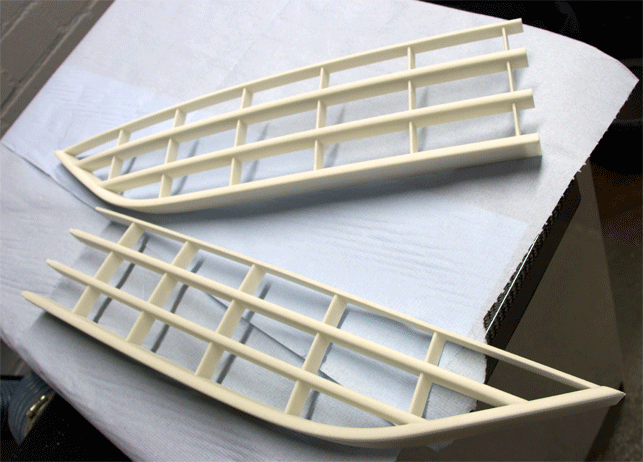
A prototype Ford grille 3D printed at its Cologne facility
Deep inside its private development facility, a short journey from the bustling city of Cologne, amidst countless other similar warehouses, Ford is tentatively showing us its Rapid Technology Centre (RTC).
A wide corridor inside one of the giant warehouses branches off into the prototyping facility, a large room with some milling machines and cubicles of staff busily working away at CAD data on screens.
Another door leads past a giant vacuum-moulding machine into a warm, dark room in which a SLS machine the size of a giant wardrobe is hard at work, while its twin across the room is also humming with activity.
This is the entrance to its 3D printing facility, where the EOS P760s are printing prototype radiator grills, and where department supervisor Sandro Piroddi meets us.
Marshalling a hive of 3D printing and CNC milling activity, Piroddi is in charge of 24 staff, working at all hours to meet the demands of Ford’s designers and engineers, both onsite and across Europe.
Having introduced SLA modelling to the RTC in 1992, the department continues to grow in size.
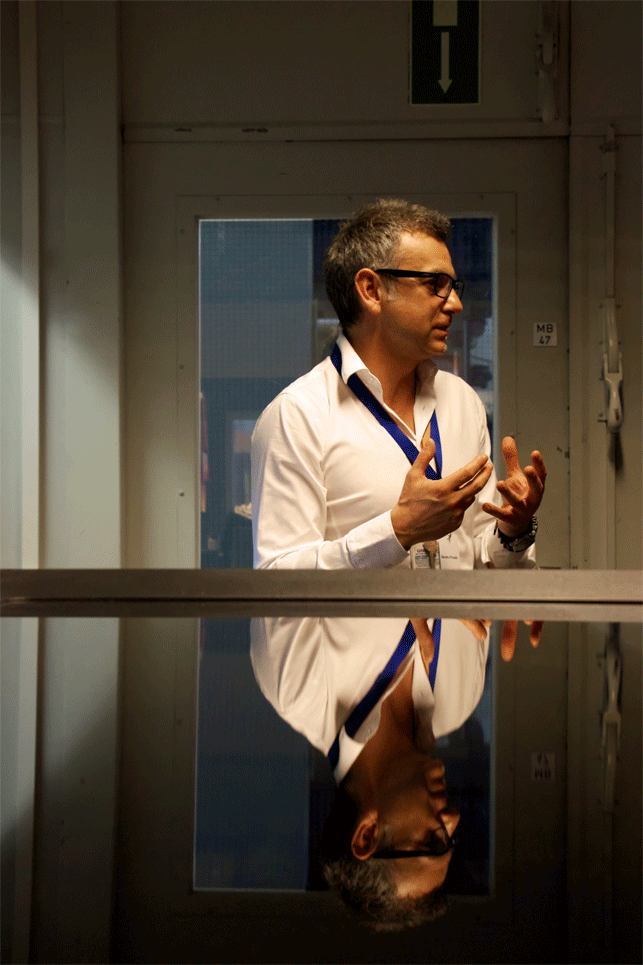
Sandro Piroddi, the RTC’s supervisor showing us around
The neighbouring room houses two Stratasys Objet Connex 500 machines – both producing prototype steering wheels, using the multi-material capabilities to replicate a tactile leather surface finish – and an EOS M280 laser sinterer, for producing small metal parts, or moulds for casting.
Last year the facility 3D printed 30,000 individual parts, although that could be 70,000, should several car designs be at the same point in their development.
In another room obscured from view are housed a selection of five-axis milling machines, injection moulding, vacuum casting with automated robot trimming, an NC bending machine for brackets, metal presses and more.
With a multi-million pound budget, Piroddi is correct in his appraisal of the RTC as “a small factory”.
“Every few years we swap these machines, which gives us the ability to be state of the art,” says the affable Italian.
“If new technologies are coming we can say OK, this is important for us, we will take this on board.”
This differs from the facilities at Ford’s headquarters in Dearborn, USA. Their machines are fully purchased. As the technology continues to improve, the American counterparts are pushing hard for similar leasing schemes to keep their technological edge.
The relationship between the RTC and the designers is a close one: beginning very early in the development process and continues until the car has been designed and allowing for any modifications or updated parts.
“We have regular meetings and requests from all areas, especially design,” says Piroddi. “It’s growing especially in design – they are using additive manufacturing parts, wheels, mirrors, interior parts, and the technology is moving forward year-by-year, giving you new possibilities in respect of complexity and materials.”
Time to market is ever shortening and soon producing 70,000 parts a year will be the standard; behind the scenes, Ford’s RTC is prepared for the future.
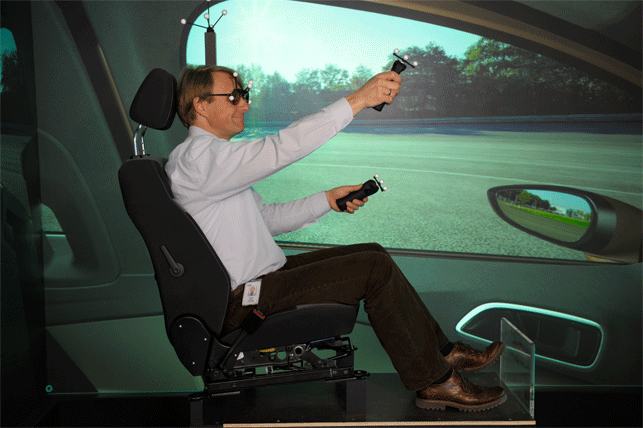
Ford’s 3D cave is used in all stages of the design, and can link in real time with its twin in the Dearborn plant in the USA
Set in one closed off section of the facility, hidden away behind a storage warehouse, is a four-sided 3D visualisation ‘cave’.
Taking the real Catia design data being used for the creation of the physical car, it is fed through virtual reality software ICIDO.
Rear projected onto the screens of the cube by two projectors on each side, design verification can be undertaken in high resolution at 1:1 scale.
Design managers can ‘walk’ around a vehicle to get a feel for the design, but more importantly they are able to sit ‘inside’ the car.
This interior perspective allows them to check practical and ergonomic aspects, such as blind spots, or potential reflection issues with the angle of the windscreen, dash, or wing mirrors.
All this can be done three years before a single part has been manufactured.
Early detection of problems has given Ford a much more robust decision-making process and has saved vast sums of development money.
The VR team are drafted into the process right from Program Start (the very beginning of concept sketches), through visualisation, testing, marketing and even pre-manufacture.
The German development centre cave is also able to team up in real-time with the Ford headquarters in Dearborn, the design teams in the UK and anywhere else with a secure cube facility.
Design presentations can now be international from the beginning, further trouble-shooting designs that are for a global market.
Already owners of the giant Virttex (virtual test track experiment) simulator at its Dearborn site – which allows a real car to be contained, and ‘driven’ through a 360 degree, 7-projector, ‘real’ sound environment while the simulator rocks and sways to simulate real-time conditions – Ford are keen to advance the smaller scale virtual reality technology.
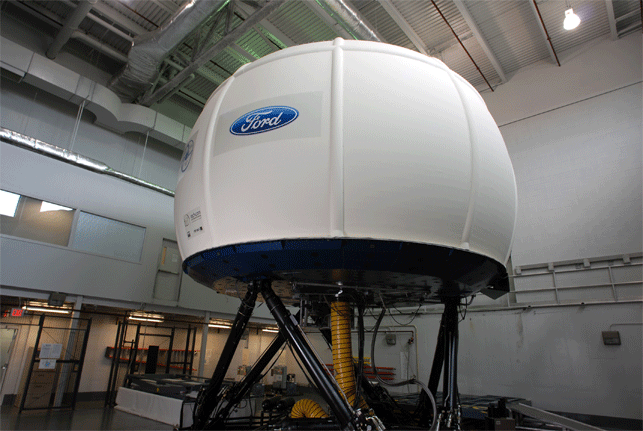
Ford’s Virttex full vehicle simulator in its Dearborn testing plant
Working with portable screens, the people who are going to be working on the manufacturing lines are trained months in advance on how the new cars will be built.
Using ‘wands’ they can virtually grasp parts and fit them to others.
The onlooking manufacturing team, through various iterations can also work out the fastest and most ergonomic way of assembling the cars, months before a single component has been manufactured.
Working with Nvidia, Ford is keen to advance ray tracing rendering tools for such environments – currently it can’t perform fast enough and the resulting images leave everyone feeling a bit sea sick.
By achieving 15 frames per second, ray tracing rendering could be a possibility, but would require a great deal of graphics power.
The current cube requires 9 workstations to provide the visuals (one to power each projector, and another to manage the entire process) each packed with two Nvidia Quadro 6000 GPUs.
The future of VR is nearly upon us with the first 4k resolution projectors and graphics cards able to power them coming soon. Ford is hoping to be at the forefront of this development, powering its ability to design automotive excellence well into the future.
https://youtube.com/watch?v=gD6X6Efkm0o%3Frel%3D0
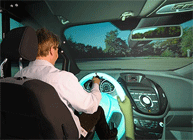
We venture into Ford’s European HQ to uncover how it utilises rapid manufacturing technology
Default






